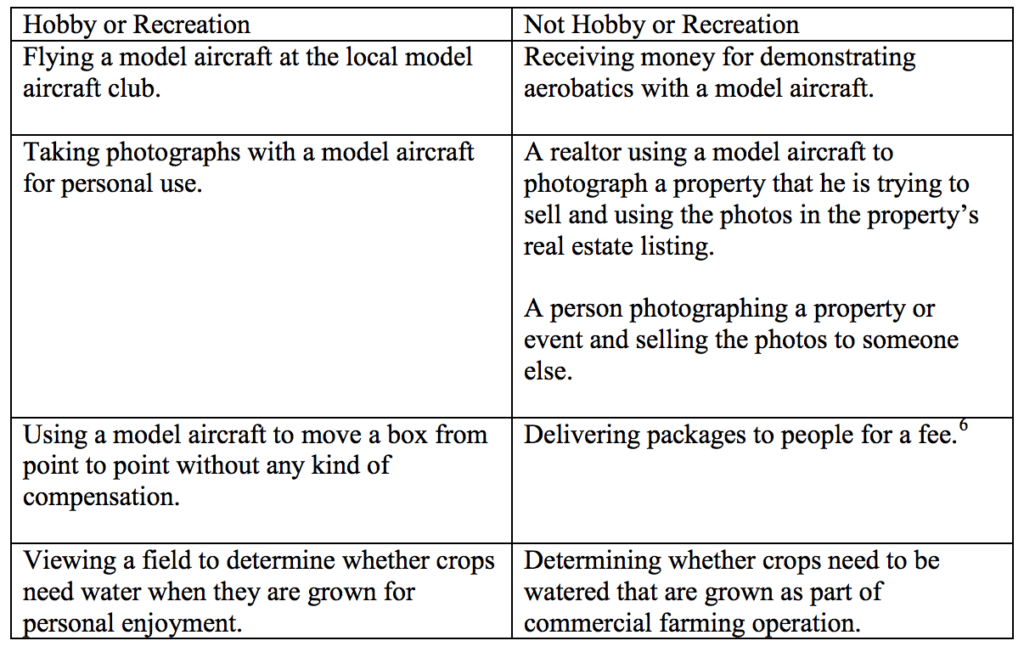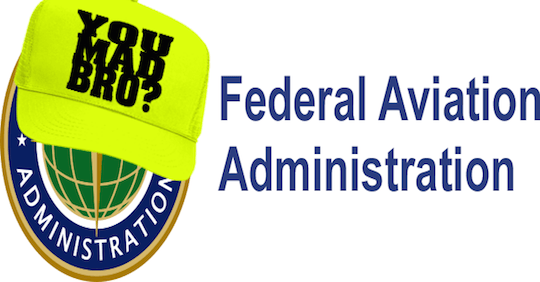As part of a long line of announcements this month, the Federal Aviation Administration published an Interpretation of the Special Rule for Model Aircraft on Monday to try and clarify the rules for flying private drones.
Frankly, it offers very little in the way of flight guidelines and reads like it wasn’t fully thought through before it was written.
The main purpose of the document was to outline specifically what qualifies as ‘model aircraft’ and to assert that anything that doesn’t meet those specifications is a UAV and is thus susceptible to the iron fist of the FAA…a claim for which there is no legal foundation.
(As a point of interest, ‘model aircraft’ is the exact term used by Judge Patrick Geraghty when he overturned the FAA’s fine of Raphael Pirker.)
The qualifications of a model aircraft include: the vehicle must be less than 55 pounds, operate within line-of-sight of the operator, be operated under the guidance -or according to the rules of- a national flying club, and be flown at least five miles away from an airport.
The most important qualification is that model aircrafts are flown for recreational purposes only; monetary compensation is prohibited. In other words, as soon as money gets involved, it becomes a UAV and the FAA says it can come at you.
Lets look at some examples of the distinctions the FAA provides by in its notice:

The group’s executive director, Dave Mathewson, put out a statement Tuesday night saying, “The AMA cannot support this rule. It is at best ill-conceived and at worst intentionally punitive and retaliatory. The Academy strongly requests the FAA reconsider this action. The AMA will pursue all available recourse to dissuade enactment of this rule.”
The second and fourth examples basically say you can use a drone to take pictures of your house and garden (or your neighbor’s house and garden…or even your neighbor, for that matter) with no legal repercussions. But as soon as a professional gets involved, its illegal.
Here’s some food for thought; who is apt to be more responsible -the guy whose livelihood depends on watering his crops properly or a college kid using his drone to film a party at his frat house? Because, according to the FAA, Old McDonald would be breaking the law and Van Wilder would be free to shotgun another beer.
But the third example is my favorite. “Delivering packages to people for a fee” is against the rules.
“Oh no!” you say, “Amazon’s Prime Air initiative is screwed!”
Is it though?
If you are an Amazon Prime Subscriber, you don’t pay for shipping.
So, by the FAA’s logic, as long as Amazon doesn’t charge for Prime Air, its totally legit, right?*
Either way, Amazon doesn’t seem worried.
In all seriousness, the major point is this: The FAA upset a lot of people with this document and it still has no way to enforce any of it. There is nothing written anywhere that says the FAA can punish you for completely disregarding this notice.
Its right up there with the cease and desists the administration sends to commercial drone operators they don’t like -you can listen… or not. Its only a recommendation, after all.
At this point, the pretense has been dropped and the FAA is just throwing everything at the wall in hopes that, when they get back into a courtroom, some of it will stick. (Side note: historically, it hasn’t).
“It’s the equivalent of saying ‘if you don’t do these things, we’ll come after you.’ It doesn’t say if they will win, but people are intimidated by the FAA and don’t want to risk the ride through the system,” said Jonathan Rupprecht of the Florida International University College of Law.
The FAA is supposed to have published an official Notice for Proposed Rulemaking by the end of the year. Until that time, it is safe to say the FAA is all bark and no flight.
*I have been advised by legal counsel that this is a ‘fine litigation’ position but it is not an advisable argument if I were to take someone to court. That being said, if you are out there Bezos, give me a call. We can talk about it.
Alan is serial entrepreneur, active angel investor, and a drone enthusiast. He co-founded DRONELIFE.com to address the emerging commercial market for drones and drone technology. Prior to DRONELIFE.com, Alan co-founded Where.com, ThinkingScreen Media, and Nurse.com. Recently, Alan has co-founded Crowditz.com, a leader in Equity Crowdfunding Data, Analytics, and Insights. Alan can be reached at alan(at)dronelife.com
